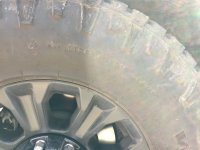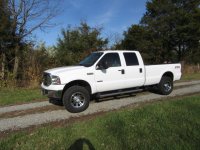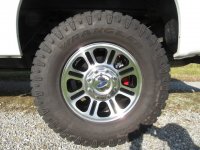Doug1111
Tremor Buff
- Joined
- Feb 27, 2021
- Messages
- 52
- Reaction Points
- 83
- Location
- Illinois
- Current Ride
- 2020 F250 Lariat w Tremor Package and 7.3
They are mud snd snow rated according to Tire Rack. This was listed on their website where they review tires.I've read multiple times that the factory duratracs are snowflake rated but I can't find the symbol on the tire sidewall. Am I missing something? 285/75/18 126Q
2022 tremor fyi














